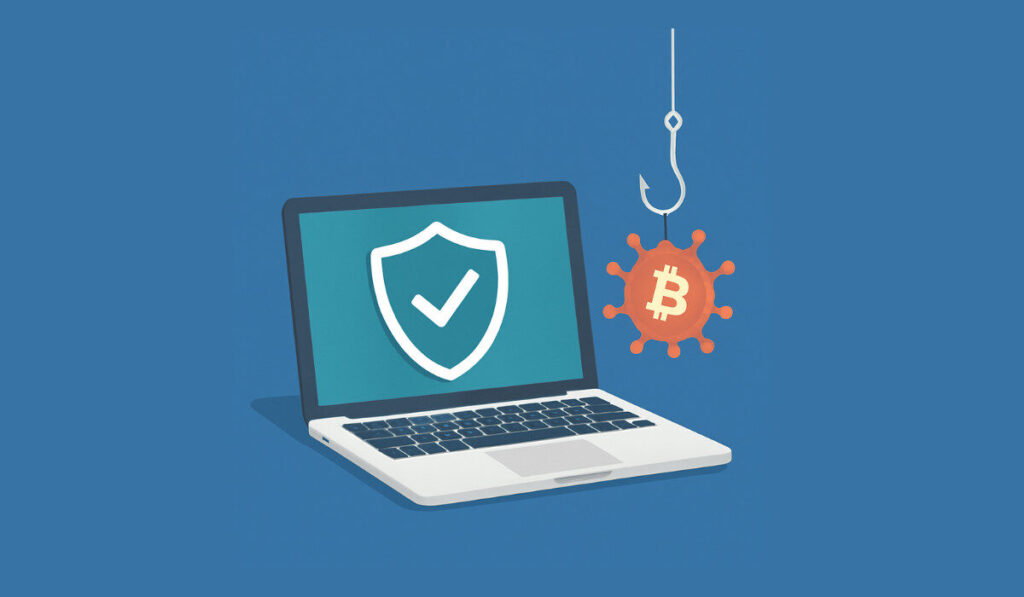What Are Cryptojacking Attacks? Here Is The Truth.

Cryptojacking is the process of attacking a computer without the victim noticing it and mining cryptocurrencies using the computational resources of the victim’s computer. Cryptojacking is also referred to as malicious cryptomining.
Cryptojacking is an easy way for an attacker to make money. By affecting the health of the victim’s system and their network resources, the attacker mines cryptocurrencies free of cost. To better understand cryptojacking, we will go through different aspects of cryptocurrencies and finally uncover the secrets of cryptojacking.
What Is Crypto Mining?
Crypto mining is a computationally challenging process. It involves either solving a hash or verifying the transactions on the blockchain. Solving the hash requires a lot of computational power, as a computer has to come up with many interactions of complex calculations. This is an extremely power-hungry process.
This process is essential to keep the blockchain running in proper condition. Without mining, the blockchain would come to a grinding halt. Since the mining process is essential for the health of the blockchain, and it consumes computational power and electricity, miners are rewarded for performing the process of cryptocurrency mining.
What Is Cryptojacking?
Cryptojacking refers to the malicious act of using someone else’s computer without their knowledge and permission to mine cryptocurrencies for monetary benefit. In a cryptojacking event, the attacker essentially hijacks the computational power of the infected device. Normally, minable coins like Bitcoin, Monero, Zcash, etc., are mined in a cryptojacking attack.
Unlike traditional attacks like ransomware or data theft, cryptojacking operates silently in the background, slowly siphoning the resources of the victim’s computational system. Cryptojacking can affect computers, smartphones, and even high-power workstations. The incognito nature of a cryptojacking attack makes it difficult for users to detect it and take corrective actions.
Cryptojacking is a term derived from the combination of ‘crypto’ and ‘jacking’. Jacking in this context refers to hijacking someone else’s device.
A cryptojacking attack usually begins with a malicious email that contains the software necessary to infect the victim’s computer or system. Once the software enters the system, it will go undetected and will use a significant portion of the system’s resources without the knowledge of the owner or the protective systems within.
As this process consumes computing power, the system starts to slow down. It will also start consuming more electricity, driving up the electricity bill. Eventually, due to continuous mining fatigue, the hardware becomes damaged much before its intended lifetime.
Methods of Cryptojacking
Cryptojacking software finds different ways to enter a system. Most of the time, the user will not even realize that their system has been infected with a malicious program that is eating up their computational resources.
One common method of introducing a system to cryptojacking software is through malicious websites and browser-based scripts. In this method, JavaScript code is used maliciously on websites or browser plug-ins to infiltrate the victim’s device. When the victim browses through the website, the code automatically runs, installing the cryptojacking software onto the computer.
This type of cryptojacking attack is called a drive-by cryptojacking attack. This type of entry does not require the user to download or install any malicious software; hence, this is a very stealthy way in which attackers can take control of a victim’s system.
How to Spot if Your Device is Cryptojacked?

By design, the craptojacking software is notorious for its ability to stay hidden. However, like any malicious software, it often leaves behind noticeable effects and evidence if we inspect the device more closely.
One of the simplest and most common signs to spot is high CPU or GPU usage. This happens even when you are not running applications that do not require such levels of processor usage. There are two methods to spot if your CPU and/or GPU is being overworked. The simple method is to listen to the cooling fan; if the cooling fan is running at abnormal speeds for longer periods, it indicates that your processor is heating up unnecessarily. The second method is to check your CPU or GPU usage via the built-in software. If an unidentified software is shown as consuming most of the system resources, it could be a cryptojacking software working in the background without your knowledge.
Another method to spot whether your system is cryptojacked is to monitor the overall temperature of your system. If your system is overheating, it is an obvious sign that a cryptojacking attack is damaging your system without your knowledge. This overheating is usually accompanied by faster battery draining.
Yet another method to spot whether your system is under a cryptojacking attack is to monitor your data usage over the internet. Cryptojacking software needs to communicate with external servers via the internet to operate, so you will find noticeably higher data consumption if your device has been compromised.
While cryptojacking can go unnoticed for a long time, subtle telltale signs like these can help you spot the possible presence of a cryptojacking software working your system to its death.
Preventing and Removing Cryptojacking Software
Prevention Methods
Preventing your system from getting infected by cryptojacking software requires active countermeasures to be established in place. Keeping your operating system, browsers, and software updated reduces the chance of infection by closing vulnerabilities that are often exploited by scripts that install cryptojacking software.
Seeking the help of a reputable anti-virus or anti-malware software can reduce the chances of your system getting infected. They can also flag any potential install files containing malicious scripts. Please note that for the software intended for protecting your device to work, it must have the ability to detect cryptojacking software.
Adding script-blocking and/or privacy-protecting extensions on your browser can prevent automatic JavaScript-enabled cryptojacking software installations. Give significant importance to these extensions as they protect you not just from cryptojacking attacks, but also secure your privacy.
Removal Methods
In case your system is already infected with a cryptojacking software, the first step is to remove it completely. Initially, you can make a non-technical quick-removal technique. This can be done by conducting a full system scan. If anything comes up as flagged during the scan, remove it promptly.
Check your files and installed software next. If you find unidentified software, uninstall it immediately. Re-check your browser extensions and remove all those that are not used and anything that is suspicious. Clear your cache and reset your browser to prevent any scripts from running again and infecting your system.
Finally, compare your CPU performance before and after the cleanup. If your CPU is running as it was intended to, the malware has been removed successfully. Otherwise, you may have to take your system to a professional to have it cleaned using advanced technical tools.
Final Thoughts
Cryptojacking is a silent but harmful malware that often goes unnoticed. It will siphon your device’s resources for someone else’s profit. By taking security measures such as monitoring performance changes, using strong security tools, and practicing safe browsing, you can keep yourself safe from such attacks.
Never let your system be compromised by such attacks, as they will reduce the lifespan of your device and will inconvenience you when you need your system resources the most.
FAQs
Yes, as any device with processing power is a suitable victim for a cryptojacking attack, your IoT devices are also under the threat of cryptojacking attacks.
Typically, the primary objective of a cryptojacking attack is to mine cryptocurrency, not data theft; however, compromised systems stand the chance of future attacks that may steal your personal data.
Yes, browser-based cryptojacking does not require any installation; it can run when you visit the infected website or through advertisements shown on the website.
Yes, cryptojacking is viewed as a resource theft in most countries and is illegal.
Yes, however, the effects may not be that apparent as they are consuming internet-based resources indirectly.
Crypto & Blockchain Expert




